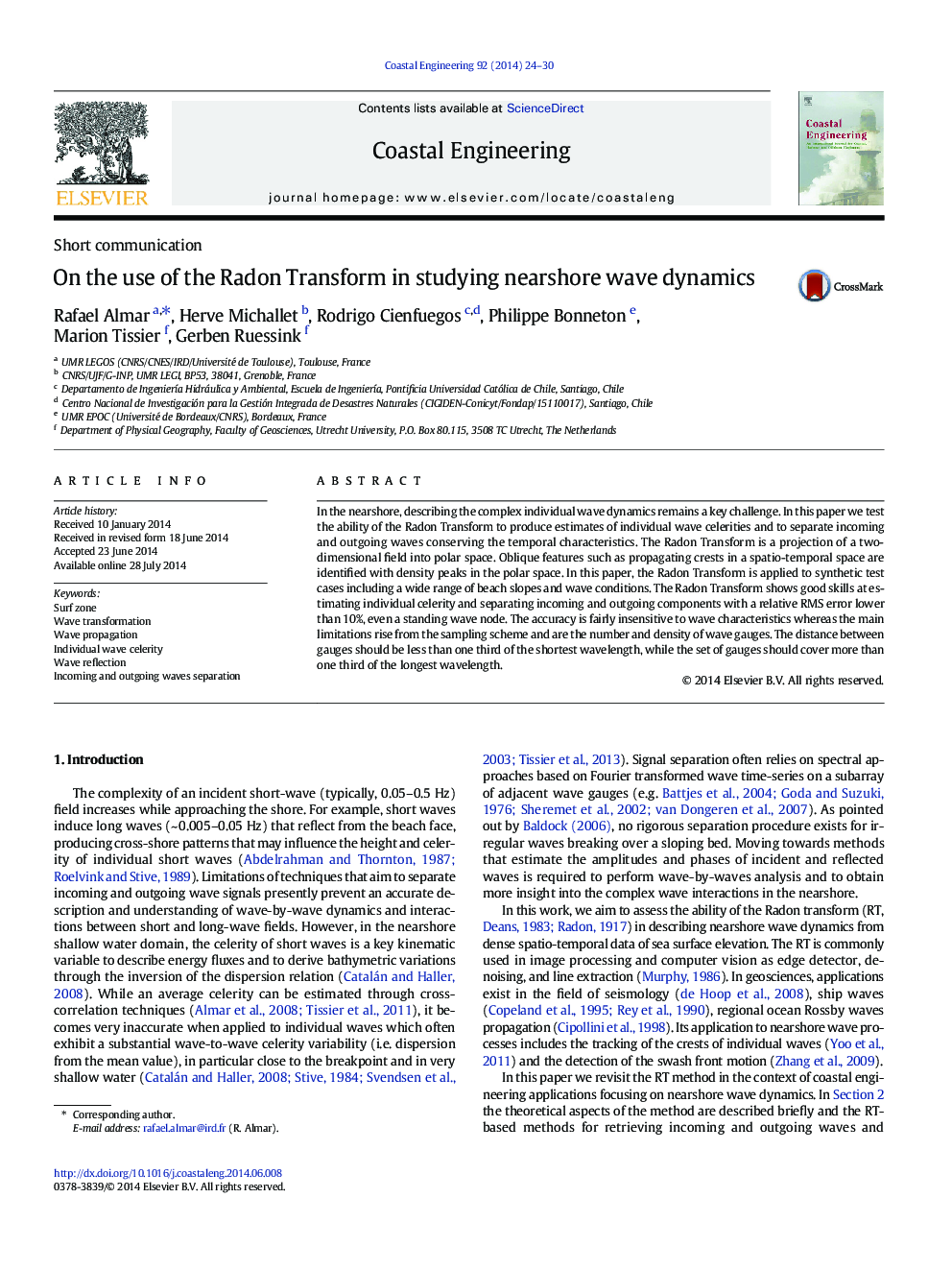| Article ID | Journal | Published Year | Pages | File Type |
|---|---|---|---|---|
| 1720738 | Coastal Engineering | 2014 | 7 Pages |
In the nearshore, describing the complex individual wave dynamics remains a key challenge. In this paper we test the ability of the Radon Transform to produce estimates of individual wave celerities and to separate incoming and outgoing waves conserving the temporal characteristics. The Radon Transform is a projection of a two-dimensional field into polar space. Oblique features such as propagating crests in a spatio-temporal space are identified with density peaks in the polar space. In this paper, the Radon Transform is applied to synthetic test cases including a wide range of beach slopes and wave conditions. The Radon Transform shows good skills at estimating individual celerity and separating incoming and outgoing components with a relative RMS error lower than 10%, even a standing wave node. The accuracy is fairly insensitive to wave characteristics whereas the main limitations rise from the sampling scheme and are the number and density of wave gauges. The distance between gauges should be less than one third of the shortest wavelength, while the set of gauges should cover more than one third of the longest wavelength.
